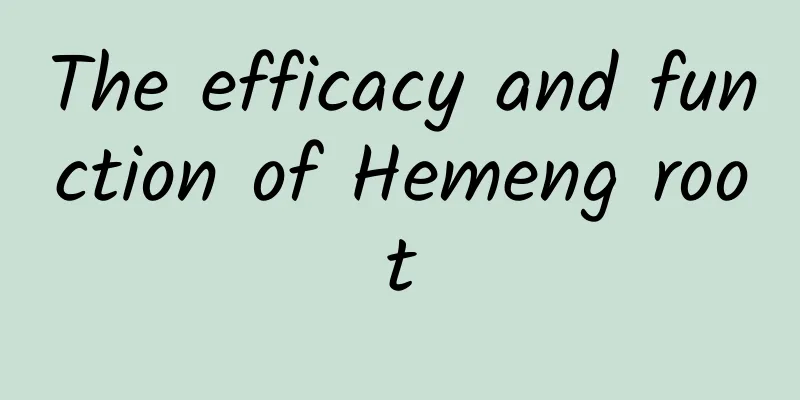The efficacy of Lingzhi Fuling Yam Soup

|
The efficacy of Lingzhi Fuling Yam Soup As the saying goes, health is the capital of revolution. The most important thing in life is physical health. Now more and more people are joining the ranks of health care and taking care of their bodies through various methods. Drinking medicinal soup is also a way to maintain health. There are many types of medicinal soups, and Ganoderma Lucidum, Poria and Chinese Yam Soup is one of them. For those who are not sick, drinking this medicinal soup can achieve the effect of health care, but what are the specific effects of this medicinal soup? Let’s take a look together. Fuling Effects: 1. Diuretic Poria is used to treat symptoms such as difficulty urinating and edema. Poria cocos has the function of promoting diuresis and eliminating dampness, and its medicinal properties are mild. It can promote diuresis without damaging the body's vital energy, making it an important medicine for promoting diuresis and eliminating dampness. It can be used for any symptoms of difficult urination and stagnant water, regardless of whether they are caused by cold and dampness, dampness and heat, or spleen deficiency and dampness. 2. Lower blood sugar Poria cocos can lower blood sugar and has a certain therapeutic effect on people with high blood sugar. 3. Calming the mind and soothing the spirit According to traditional Chinese medicine, Poria cocos can be used to treat palpitations, insomnia and other symptoms. Poria can nourish the heart and soothe the mind, so it can be used for symptoms such as restlessness, palpitations, and insomnia. It is often used in combination with ginseng, polygala, and spinach seed. 4. Anti-tumor effect Poria polysaccharide showed strong anti-tumor effects in animal experiments. Poria cocos has the function of resisting thymus atrophy, spleen enlargement and inhibiting tumor growth. 5. Replenish Qi and Strengthen the Spleen Traditional Chinese medicine believes that Poria cocos can be used for diarrhea caused by spleen deficiency. Poria can both strengthen the spleen and eliminate dampness. It can treat both the symptoms and the root cause of diarrhea and leucorrhea caused by spleen deficiency and dysfunction. It is often used in combination with Codonopsis pilosula, Atractylodes macrocephala, and Dioscorea opposita. It can also be used as an auxiliary medicine for nourishing the lungs and spleen and treating qi deficiency. 6. Treat phlegm Poria is used for cough due to phlegm and dampness entering the meridians, and soreness of the shoulders and back. Poria has a therapeutic effect on spleen deficiency, which is unable to transport and transform water and dampness, and its accumulation and transformation into phlegm and fluid. It can be used together with Pinellia and dried tangerine peel, or with cinnamon twig and Atractylodes macrocephala. It can be used together with Pinellia ternata and Citrus aurantium to treat phlegm and dampness entering the meridians, shoulder and back pain. 1. Diuretic Poria is used to treat symptoms such as difficulty urinating and edema. Poria cocos has the function of promoting diuresis and eliminating dampness, and its medicinal properties are mild. It can promote diuresis without damaging the body's vital energy, making it an important medicine for promoting diuresis and eliminating dampness. It can be used for any symptoms of difficult urination and stagnant water, regardless of whether they are caused by cold and dampness, dampness and heat, or spleen deficiency and dampness. 2. Anti-tumor effect Poria polysaccharide showed strong anti-tumor effects in animal experiments. Poria cocos has the function of resisting thymus atrophy, spleen enlargement and inhibiting tumor growth. 3. Replenish Qi and Strengthen the Spleen Traditional Chinese medicine believes that Poria cocos can be used for diarrhea caused by spleen deficiency. Poria can both strengthen the spleen and eliminate dampness. It can treat both the symptoms and the root cause of diarrhea and leucorrhea caused by spleen deficiency and dysfunction. It is often used in combination with Codonopsis pilosula, Atractylodes macrocephala, and Dioscorea opposita. It can also be used as an auxiliary medicine for nourishing the lungs and spleen and treating qi deficiency. 4. Treat phlegm Poria is used for cough due to phlegm and dampness entering the meridians, and soreness of the shoulders and back. Poria has a therapeutic effect on spleen deficiency, which is unable to transport and transform water and dampness, and its accumulation and formation of phlegm and fluid. It can be used together with Pinellia and dried tangerine peel, or with cinnamon twig and Atractylodes macrocephala. It can be used together with Pinellia ternata and Citrus aurantium to treat phlegm and dampness entering the meridians, shoulder and back pain. Effects of Lingzhi: 1. Treatment of arrhythmias: In the process of using Ganoderma lucidum to treat coronary heart disease, it was found that as coronary heart disease improved, the accompanying arrhythmias also improved and disappeared. Therefore, Ganoderma lucidum injection was used to treat various arrhythmias, achieving certain results. 2. It is more effective in treating acute viral hepatitis than traditional "liver protection" drugs. In addition, it is also used to treat atrophic gastritis, malignant tumors, etc. 3. Treatment of diabetes: The principle of Ganoderma lucidum in lowering blood sugar is due to promoting the utilization of sugar by tissues. After taking Ganoderma lucidum, it can replace insulin to inhibit the release of fatty acids, and can improve symptoms such as blood sugar and urine sugar. Blood sugar dropped from 173 to 116, cholesterol dropped from 233 to 179, and β-protein dropped from 580 to 465. The water-soluble polysaccharides in Ganoderma lucidum can reduce the incidence of non-insulin-dependent diabetes. |
Recommend
The efficacy and function of Nepeta root
Schizonepeta root is a traditional Chinese medici...
"Ginger soaked in vinegar" can nourish the stomach, lose weight and remove dampness? Don't believe it anymore
Rumor: "'Ginger soaked in vinegar' c...
Seriously, is this guy a fish or a dragon?
The "guest" we are interviewing today i...
This insect "companion" is actually a wonderful traditional Chinese medicine
When talking about mulberry leaves, we have to me...
The efficacy and function of sorghum seven
Friends who don’t know about sorghum seven will n...
Tmall: The number of new merchants on the Tmall platform will increase by 83% year-on-year in 2024, and 733 brands will have an annual turnover of more than 10 million
Tmall released the 2024 Merchant Store Opening Re...
The efficacy and function of goblin grass
The development of Western medicine has brought s...
What is the medicinal value of white peony root?
When it comes to white peony, everyone may be rel...
What are the effects and functions of Imperata root?
Imperata root is a common Chinese medicine. Its m...
The efficacy and function of Caragana
Do you know what Caragana korshinskii is? It is a...
The efficacy and function of the root of Tripterygium wilfordii
In fact, the occurrence of many human diseases is...
The efficacy and function of kelp
I believe many people are familiar with the Chine...
The efficacy and function of hemp
Everyone is familiar with tree hemp, of course so...
The efficacy and function of hornwort
Huomacao, also known as Xunmacao, is a perennial ...
Known as the "Goddess of Night Banquet", it is also the stone of the brave who ride the wind and waves!
A variety show made the term "ride the wind ...









